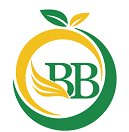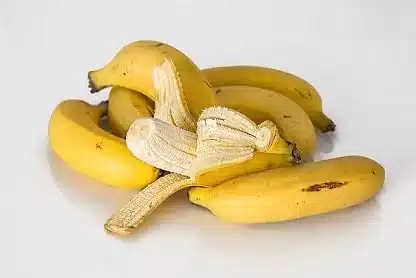Potassium is a micronutrient that is vital for the smooth functioning of the body. It functions majorly as an electrolyte, which together with sodium and other compounds, regulate the balance of fluids in the body. It ensures the maintenance of a normal levels of fluid inside the body’s cells whereas sodium maintains fluid levels outside the body’s cells (1, 2).
Benefits
- Lowers blood pressure. A potassium rich diet is associated with the maintenance of a healthy blood pressure range. This is because potassium increases the excretion of sodium via urine, whose increase concentrations in the blood draw more water into the blood stream and increase blood pressure (3, 4).
- Boosts muscles and nerves functions. Potassium is needed by the nerves to send electrical signals that help nerve cells to communicate. Thus, it plays a vital role in muscle contraction, and it is crucial for the maintenance of a good and regular hearth rate. Low potassium levels are associated with stiffness of muscles as well as a loss of sense of touch (5).
- Enhances carbohydrate metabolism. Potassium boosts the breakdown of carbohydrates as it is an active mineral in process that converts glucose to glycogen, which is stored in the liver to be used as energy in the future (6).
Potassium rich foods
The body cannot produce potassium making it is an essential nutrient which must then be gotten from the foods we eat. Fortunately, many foods are rich in potassium, most of which are readily available and affordable. Fruits, vegetables (such as leafy greens, starchy vegetables, beans), nuts and dairy foods are all foods that contain significant levels of potassium.
Foods
- Beans. Pinto beans is the most potassium dense beans (1390mg/100g). Kidney beans, lima beans, white beans, soybeans, and lentils are also good sources of potassium (7).
- Nuts. Pistachio nuts contain the highest amounts of potassium (1020mg/100g), followed by cashew nuts (733mg/100g) and almond nuts (660mg/100g) (8, 9, 10).
- Leafy vegetables. Spinach takes the lead in potassium content (558mg/100g) followed by Swiss chard (379mg/100g). Beet greens and bok choy are also leafy vegetables with significant potassium levels (11, 12).
- Fruits. Avocado tops the list here with a potassium content of 485mg/100g, followed by others such as bananas (328mg/100g), cantaloupe (267mg/100g) (13, 14, 15).
- Starchy vegetables. Potassium rich starchy vegetables are potatoes (425mg/100g), acorn squash (347mg/100g) and butter squash (284mg/100g) (16, 17, 18).
- Meats. Chicken is a significant source of potassium (522mg/100g), followed by beef (270mg/100g) and turkey (247mg/100g) (19, 20, 21).
- Fish. Potassium rich fish include salmon (490mg/100g), mackerel (401mg/100g) and tuna (237mg/100g). Atlantic cod and snapper are also rich in potassium (22, 23, 24).
- Dairy. A significant amount of potassium can also be found in yogurt (141mg/100g), dairy milk (132mg/100g) and plant milk products like almond milk and soymilk (25, 26).
Potassium plays a very important role in the smooth functioning if the body. As of now, it has no existing Recommended Daily Allowance (RDA) amount established by any health organization. However, the National Academy of Medicine has put forth the following safe values called the Adequate Intake (AI) (27)
- Women 14 – 18 years; 2,300mg/day
- Women 19+ years; 2,600mg/day
- Pregnant and lactating women; 2,500 – 2,900mg/day depending on their age
- Men 14 – 18 years; 3,000mg/day
- Men 19+ years; 3,400mg/day
It should be noted that too much in the blood (hyperkalemia) can cause weakness, chest pain, shortness of breath, heart palpitations and irregular heartbeat.
REFERENCES
- (2019, July 18). Retrieved November 25, 2022, from Harvard Health website: https://www.health.harvard.edu/staying-healthy/the-importance-of-potassium
- (N.d.). Retrieved November 25, 2022, from Foodinsight.org website: https://foodinsight.org/wp-content/uploads/2020/04/Potassium-Fact-Sheet.pdf
- Control high blood pressure. (n.d.). Retrieved November 25, 2022, from www.heart.org website: https://www.heart.org/en/health-topics/high-blood-pressure/changes-you-can-make-to-manage-high-blood-pressure/how-potassium-can-help-control-high-blood-pressure
- Grillo, A., Salvi, L., Coruzzi, P., Salvi, P., & Parati, G. (2019). Sodium intake and hypertension. Nutrients, 11(9), 1970. doi:10.3390/nu11091970
- Potassium. (2012). Food and Nutrition. Retrieved from https://medlineplus.gov/potassium.html
- Sugiyama, T., & Goto, Y. (1966). Effect of potassium on the conversion and degradation of sugar. Soil Science and Plant Nutrition, 12(6), 19–23. doi:10.1080/00380768.1966.10431962
- FoodData central. (n.d.-c). Retrieved November 25, 2022, from Usda.gov website: https://fdc.nal.usda.gov/fdc-app.html#/food-details/175199/nutrients
- FoodData central. (n.d.-h). Retrieved November 25, 2022, from Usda.gov website: https://fdc.nal.usda.gov/fdc-app.html#/food-details/170184/nutrients
- FoodData central. (n.d.-j). Retrieved November 25, 2022, from Usda.gov website: https://fdc.nal.usda.gov/fdc-app.html#/food-details/170567/nutrients
- FoodData central. (n.d.-k). Retrieved November 25, 2022, from Usda.gov website: https://fdc.nal.usda.gov/fdc-app.html#/food-details/170162/nutrients
- FoodData central. (n.d.-e). Retrieved November 25, 2022, from Usda.gov website: https://fdc.nal.usda.gov/fdc-app.html#/food-details/168462/nutrients
- FoodData central. (n.d.-l). Retrieved November 25, 2022, from Usda.gov website: https://fdc.nal.usda.gov/fdc-app.html#/food-details/169991/nutrients
- FoodData central. (n.d.-d). Retrieved November 25, 2022, from Usda.gov website: https://fdc.nal.usda.gov/fdc-app.html#/food-details/171705/nutrients
- FoodData central. (n.d.-c). Retrieved November 25, 2022, from Usda.gov website: https://fdc.nal.usda.gov/fdc-app.html#/food-details/175199/nutrients
- FoodData central. (n.d.-m). Retrieved November 25, 2022, from Usda.gov website: https://fdc.nal.usda.gov/fdc-app.html#/food-details/169092/nutrients
- FoodData central. (n.d.-b). Retrieved November 25, 2022, from Usda.gov website: https://fdc.nal.usda.gov/fdc-app.html#/food-details/170026/nutrients
- FoodData central. (n.d.-f). Retrieved November 25, 2022, from Usda.gov website: https://fdc.nal.usda.gov/fdc-app.html#/food-details/168472/nutrients
- FoodData central. (n.d.-n). Retrieved November 25, 2022, from Usda.gov website: https://fdc.nal.usda.gov/fdc-app.html#/food-details/169296/nutrients
- FoodData central. (n.d.-i). Retrieved November 25, 2022, from Usda.gov website: https://fdc.nal.usda.gov/fdc-app.html#/food-details/171116/nutrients
- FoodData central. (n.d.-o). Retrieved November 25, 2022, from Usda.gov website: https://fdc.nal.usda.gov/fdc-app.html#/food-details/174036/nutrients
- {{MetaTags.Title. (n.d.). Retrieved November 25, 2022, from Nutritionix.com website: https://www.nutritionix.com/i/usda/turkey-breast-meat-3-oz/463d62378f114066e6619ea3
- FoodData central. (n.d.-p). Retrieved November 25, 2022, from Usda.gov website: https://fdc.nal.usda.gov/fdc-app.html#/food-details/173686/nutrients
- FoodData central. (n.d.-q). Retrieved November 25, 2022, from Usda.gov website: https://fdc.nal.usda.gov/fdc-app.html#/food-details/175120/nutrients
- FoodData central. (n.d.-r). Retrieved November 25, 2022, from Usda.gov website: https://fdc.nal.usda.gov/fdc-app.html#/food-details/175158/nutrients
- FoodData central. (n.d.-s). Retrieved November 25, 2022, from Usda.gov website: https://fdc.nal.usda.gov/fdc-app.html#/food-details/170903/nutrients
- FoodData central. (n.d.-t). Retrieved November 25, 2022, from Usda.gov website: https://fdc.nal.usda.gov/fdc-app.html#/food-details/171265/nutrients
- (2019, June 3). Retrieved November 25, 2022, from The Nutrition Source website: https://www.hsph.harvard.edu/nutritionsource/potassium/

